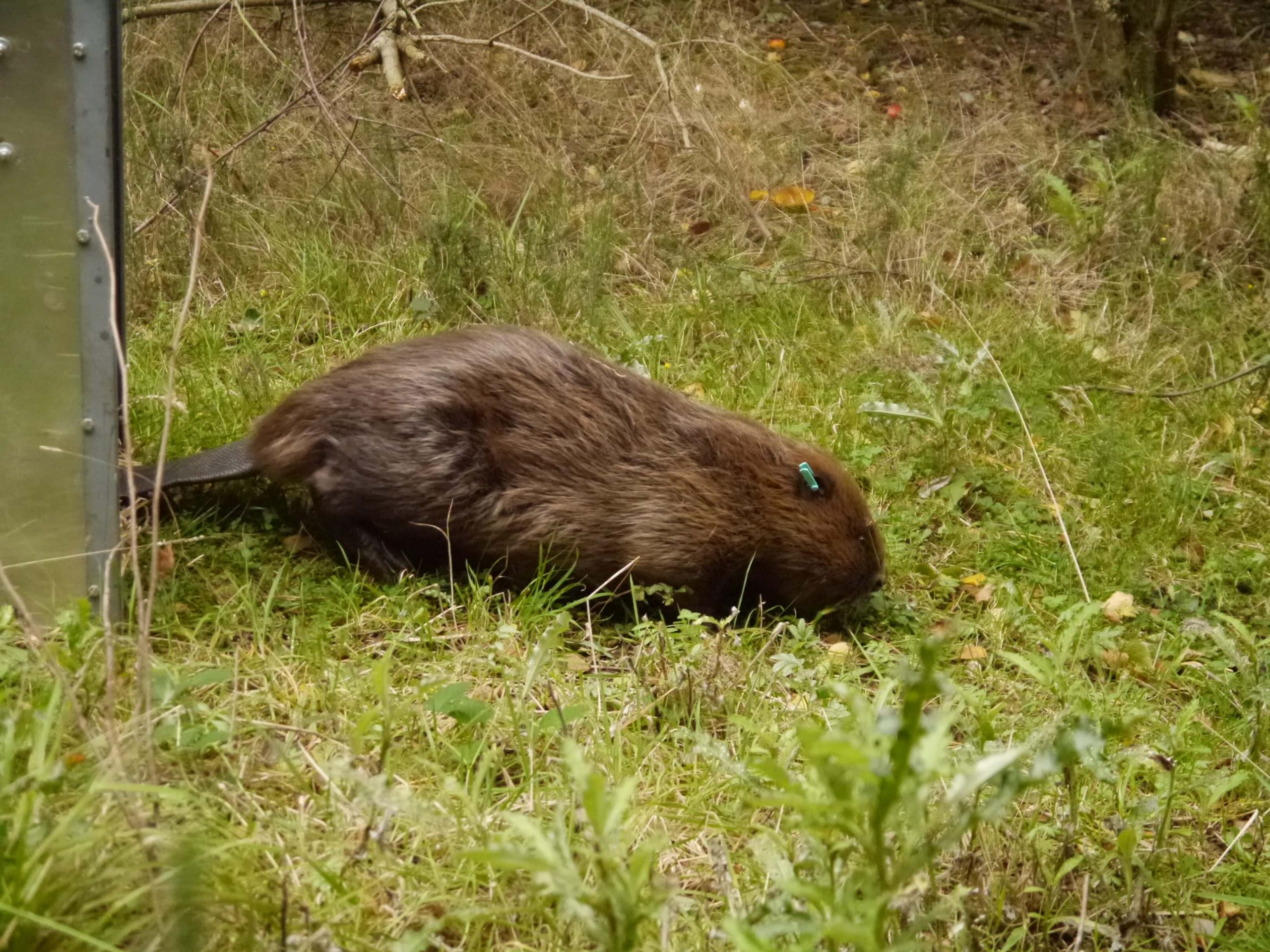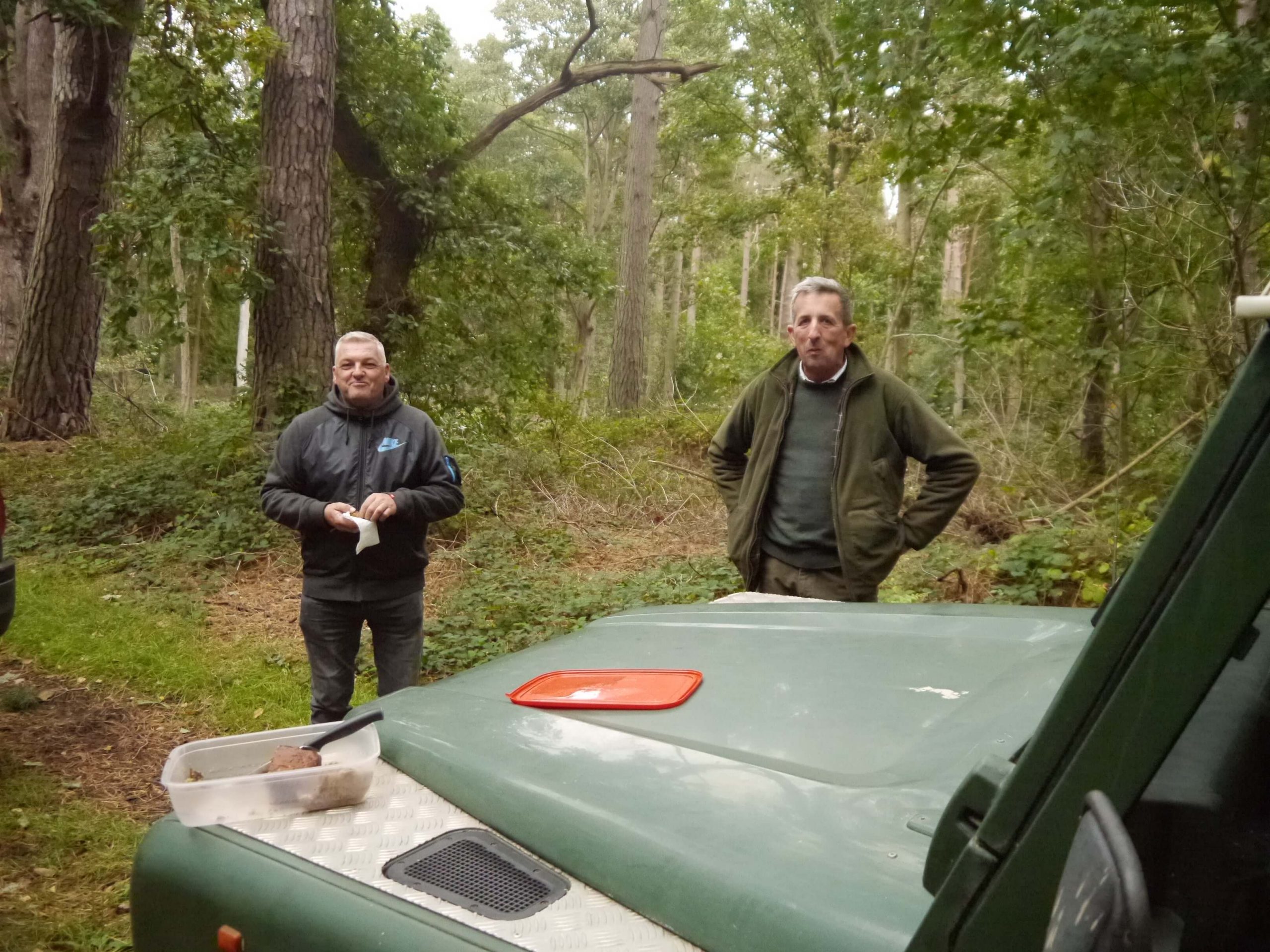


Readers of our previous blog on the beaver project at Wild Ken Hill will know that for some time we have been hoping to release two male beavers to join the two females already onsite.
We originally intended to introduce two pairs of beavers in March, but the beginning of national lockdown meant we were only able to introduce two females. It is slightly unnatural for beavers to remain single in the wild, so the introduction of two males is great news. Hopefully the males will now pair up with the females and breed in the coming seasons.
As the male beavers would also be coming from wild populations in Scotland, we were waiting for the right beavers to be sourced. We found out on Friday that two adolescent, healthy brothers of around 14kg each had been successfully gathered by the wonderful Roisin Campbell-Palmer.
These were perfect for our site, as the males were of a similar age to the females introduced in March (2-3 years old), and are also less likely to be aggressive to one another because of their fraternal connection. So we quickly scrambled to get ready for the transportation and release of the two males, and on Sunday afternoon (27th Sept), both males arrived at Wild Ken Hill.
We had experience from the previous release, and we smoothly lifted the two beaver crates into the enclosure (a necessity because the fence is so high), before carrying them to the two individual release sites.
It was important to carefully select the release sites. We wanted to release the males right into the individual territories created by both females, to give them the best chance of pairing up with the females, and to make sure they didn’t wander into one another’s territories, which could lead to conflict between the beavers. The camera traps, along with clear field signs, had given us a firm location for the females’ respective territories.
The release process itself was magical. Laying the crates down on the banks and pointing the crates toward the water’s edge, we slid open the crate door. In both instances, the male beaver poked out its nose, sniffing and inspecting its new home. Very gently both beavers crept into the water, before paddling off and eventually submerging themselves to feel safely hidden in their new environment.
The first beaver to be released (with an orange tag), which is joining the female Florence, was quite quick to leave its crate and get into the water. The second beaver (with a blue tag), joining Ebony was a little more hesitant, perhaps a little tired from its journey down south. We will get full videos of the releases online as soon as we can!
During these special moments, it was important to remember the significance of this conservation work. We are releasing beavers at Wild Ken Hill because of their ability to create ecosystems that other species use, and boost biodiversity. Already we have seen the beavers begin to transform their enclosure into a wetter and more open habitat that will boost biodiversity over time.
But also – the beavers at Wild Ken Hill all come from Tayside in Scotland, where around 20% of the wild population was killed in around 7 months of 2019, under licenses provided by the Scottish government. In England, the beaver is not even recognised as a native animal by the government despite clear evidence to the contrary. So this release was also about securing the long-term future of this native and extremely beneficial animal in the UK.
Afterwards the team enjoyed a thoroughly-deserved slice of cake – there were grins all round having completed some extremely important conservation work. Both males underwent all necessary medical screening processes before being safely transported to Wild Ken Hill.

As before, we will be using camera traps to keep an eye on what the beavers are up to, and regularly posting on our social media channels with updates – so don’t forget to follow us on Instagram, Facebook, or Twitter!